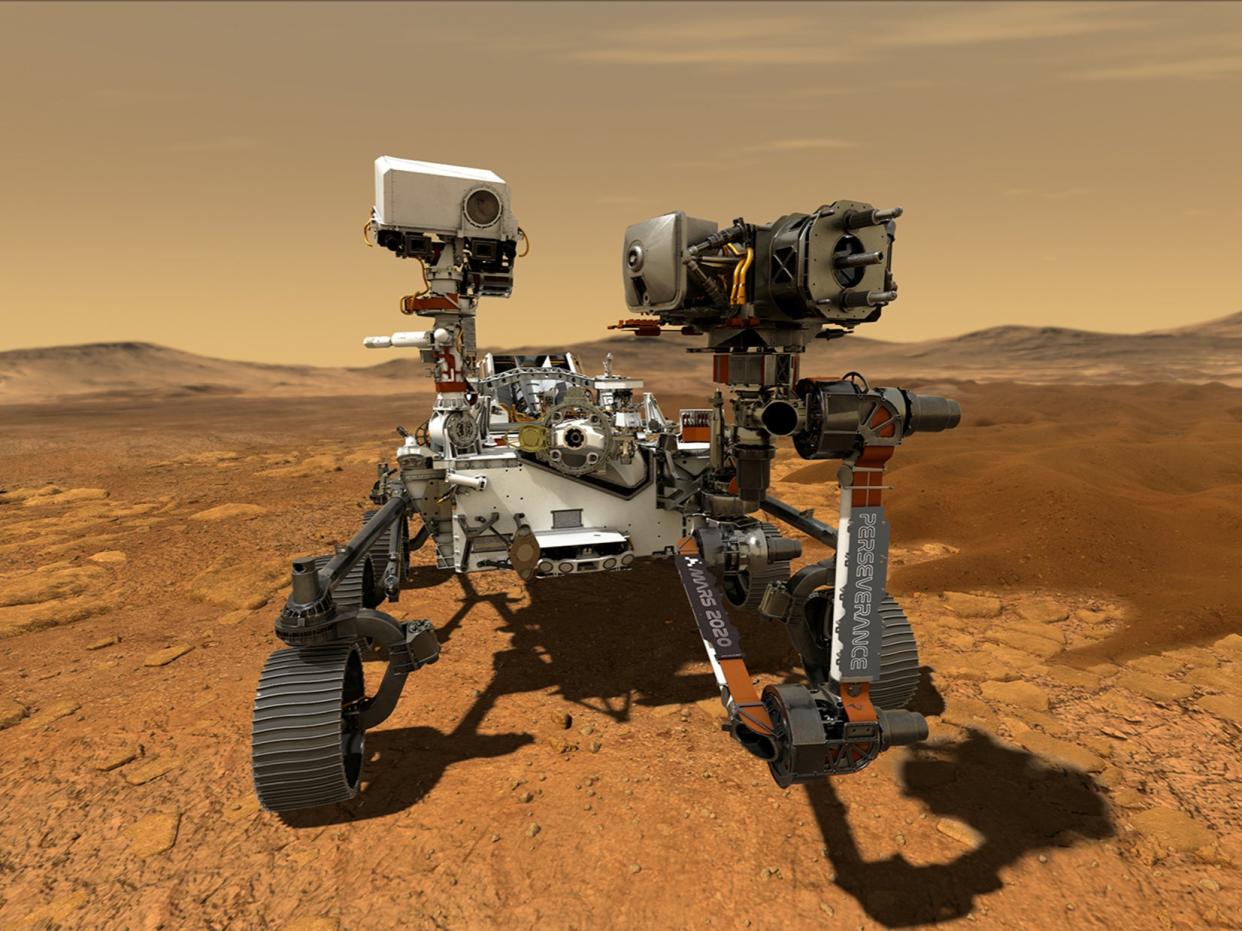Nasa’s Perseverance rover starts searching for alien life by breaking rocks in an extinct lake

Nasa’s Perseverance rover has begun searching for extra-terrestrial life in a vacant lake.
The rover is using a camera called WATSON at the end of its mechanical arm to take detailed images of the rocks on the floor of the Jezero Crater.
This barren basin, Nasa believes, was once flooded with water and was the location of an ancient river – and where there is water, the agency believes, is a higher possibility of microbial life.
Perseverance is creating a timeline of when the ancient lake formed, when it dried up, and when sediment began accruing in the delta.
It is this difference in geology that might unlock the secrets to discovering alien life. If the rocks are sedimentary, like sandstone and limestone, there is a better chance that it will have preserved biosignatures from the Red Planet’s previous life.
Watch: NASA prepares for James Webb Telescope's launch
Should the rocks be igneous, formed by volcanic activity which scientists believe could still be happening, what is lost in preservation is made up in chronology; scientists can use this data to build up a more accurate timeline of the crater. “The more rocks you look at, the more you know,” said Perseverance’s project scientist Ken Farley.
This is not an easy task, however. Rocks on Mars have been eroded by wind and could be covered by more recent sand and dust. On Earth, the solution is to crack open a rock sample with a hammer to study it in greater detail. Perseverance, unfortunately, does not have a hammer – but its robot arm is picking up the slack.
Scientists are able to use the abrader – a tool for wearing away external surfaces – at the end of the arm to grind and flatten the rock’s surface, revealing its internal structure and composition. This leaves it vulnerable to other tools the rover has to gather information about its chemical and mineral setup.
As well as digging in the ground, Perseverance is also looking to get more information about the Martian atmosphere. The small helicopter, Ingenuity, that came to Mars with the rover will continue flying for at least another month to conduct scientific experiments following the astounding success of its initial launch.
Read More
Ethereum price shoots to new all-time high as experts make $20,000 prediction
Goldman Sachs executive reportedly quits after making fortune from Dogecoin
Instagram now lets people state their pronouns in dedicated section of profile

